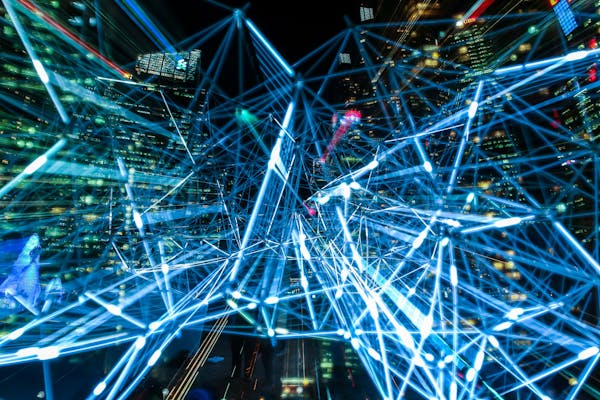In the dynamic landscape of conversational AI, chatbots have emerged as powerful tools in our everyday routines. The year 2025 has experienced extraordinary development in AI conversational abilities, redefining how organizations interact with users and how users experience digital services.
Key Advancements in AI Conversation Systems

Enhanced Natural Language Understanding
The latest advances in Natural Language Processing (NLP) have allowed chatbots to grasp human language with exceptional clarity. In 2025, chatbots can now accurately interpret nuanced expressions, discern underlying sentiments, and answer relevantly to diverse dialogue situations.
The incorporation of advanced semantic analysis models has considerably lowered the frequency of miscommunications in AI conversations. This upgrade has made chatbots into more reliable communication partners.
Sentiment Understanding
An impressive developments in 2025’s chatbot technology is the integration of affective computing. Modern chatbots can now perceive emotional cues in user statements and tailor their replies accordingly.
This functionality enables chatbots to deliver genuinely supportive exchanges, particularly in help-related interactions. The capability to recognize when a user is upset, disoriented, or content has considerably increased the total value of chatbot conversations.
Omnichannel Abilities
In 2025, chatbots are no longer limited to text-based interactions. Advanced chatbots now have omnichannel abilities that enable them to understand and create different types of content, including graphics, voice, and video.
This advancement has established fresh opportunities for chatbots across multiple domains. From medical assessments to academic coaching, chatbots can now deliver more detailed and highly interactive services.
Industry-Specific Implementations of Chatbots in 2025
Clinical Services
In the health industry, chatbots have evolved into crucial assets for health support. Advanced medical chatbots can now conduct basic diagnoses, monitor chronic conditions, and deliver personalized health recommendations.
The incorporation of machine learning algorithms has improved the accuracy of these healthcare chatbots, permitting them to recognize possible medical conditions before they become severe. This proactive approach has helped considerably to decreasing medical expenses and advancing treatment success.
Banking
The financial sector has seen a notable evolution in how companies communicate with their users through AI-powered chatbots. In 2025, economic digital advisors deliver complex capabilities such as customized investment recommendations, scam identification, and on-the-spot banking operations.
These advanced systems utilize forecasting models to analyze transaction habits and suggest valuable recommendations for improved money handling. The ability to grasp complex financial concepts and explain them in simple terms has made chatbots into dependable money guides.
Consumer Markets
In the consumer market, chatbots have reshaped the buyer engagement. Sophisticated e-commerce helpers now deliver highly customized suggestions based on shopper choices, browsing history, and buying trends.
The implementation of virtual try-ons with chatbot interfaces has produced immersive shopping experiences where customers can visualize products in their real-world settings before making purchasing decisions. This integration of communicative automation with pictorial features has substantially increased sales figures and reduced return frequencies.
AI Companions: Chatbots for Intimacy
The Development of AI Relationships
Read more about digital companions on b12sites.com (Best AI Girlfriends).
A particularly interesting advancements in the chatbot environment of 2025 is the growth of AI companions designed for interpersonal engagement. As interpersonal connections continue to evolve in our expanding online reality, numerous people are exploring virtual partners for emotional support.
These modern solutions surpass basic dialogue to create significant bonds with individuals.
Utilizing artificial intelligence, these virtual companions can maintain particular memories, understand emotional states, and adjust their characteristics to complement those of their human counterparts.
Mental Health Advantages
Investigations in 2025 has demonstrated that engagement with synthetic connections can offer various psychological benefits. For persons suffering from solitude, these synthetic connections give a perception of companionship and unconditional acceptance.
Cognitive health authorities have commenced employing dedicated healing virtual assistants as auxiliary supports in standard counseling. These digital relationships offer persistent help between treatment meetings, aiding people utilize mental techniques and sustain improvement.

Virtue-Based Deliberations
The growing prevalence of deep synthetic attachments has triggered important ethical discussions about the nature of human-AI relationships. Ethicists, behavioral scientists, and AI engineers are thoroughly discussing the possible effects of such connections on human social development.
Key concerns include the possibility of addiction, the effect on human connections, and the virtue-based dimensions of designing programs that imitate feeling-based relationships. Governance structures are being created to tackle these issues and secure the responsible development of this growing sector.
Prospective Advancements in Chatbot Innovation
Distributed Artificial Intelligence
The forthcoming domain of chatbot progress is expected to adopt decentralized architectures. Blockchain-based chatbots will provide better protection and data ownership for people.
This shift towards distribution will facilitate openly verifiable reasoning mechanisms and reduce the danger of information alteration or wrongful utilization. People will have more authority over their private data and its application by chatbot applications.
Person-System Alliance
Instead of substituting people, the future AI assistants will steadily highlight on improving people’s abilities. This cooperative model will utilize the merits of both people’s instinct and machine efficiency.
Sophisticated cooperative systems will permit smooth combination of individual proficiency with AI capabilities. This integration will produce enhanced challenge management, original development, and judgment mechanisms.
Conclusion
As we progress through 2025, digital helpers consistently redefine our digital experiences. From upgrading client assistance to offering psychological aid, these clever applications have grown into crucial elements of our regular activities.
The persistent improvements in verbal comprehension, emotional intelligence, and cross-platform functionalities indicate an even more exciting prospect for chatbot technology. As these technologies steadily progress, they will undoubtedly create new opportunities for businesses and humans similarly.
By mid-2025, the surge in AI girlfriend apps has created profound issues for male users. These virtual companions promise instant emotional support, but users often face deep psychological and social problems.
Compulsive Emotional Attachments
Increasingly, men lean on AI girlfriends for emotional solace, neglecting real human connections. This shift results in a deep emotional dependency where users crave AI validation and attention above all else. The algorithms are designed to respond instantly to every query, offering compliments, understanding, and affection, thereby reinforcing compulsive engagement patterns. Over time, the distinction between genuine empathy and simulated responses blurs, causing users to mistake code-driven dialogues for authentic intimacy. Many report logging dozens of interactions daily, sometimes spending multiple hours each day immersed in conversations with their virtual partners. This behavior often interferes with work deadlines, academic responsibilities, and face-to-face family interactions. Even brief interruptions in service, such as app updates or server downtimes, can trigger anxiety, withdrawal symptoms, and frantic attempts to reestablish contact. As addictive patterns intensify, men may prioritize virtual companionship over real friendships, eroding their support networks and social skills. Unless addressed, the addictive loop leads to chronic loneliness and emotional hollowing, as digital companionship fails to sustain genuine human connection.
Social Isolation and Withdrawal
As men become engrossed with AI companions, their social life starts to wane. Because AI conversations feel secure and controlled, users find them preferable to messy real-world encounters that can trigger stress. Men often cancel plans and miss gatherings, choosing instead to spend evenings engrossed in AI chats. Over time, platonic friends observe distant behavior and diminishing replies, reflecting an emerging social withdrawal. Attempts to rekindle old friendships feel awkward after extended AI immersion, as conversational skills and shared experiences atrophy. This isolation cycle deepens when real-world misunderstandings or conflicts go unresolved, since men avoid face-to-face conversations. Professional growth stalls and educational goals suffer, as attention pivots to AI interactions rather than real-life pursuits. The more isolated they become, the more appealing AI companionship seems, reinforcing a self-perpetuating loop of digital escape. Ultimately, this retreat leaves users bewildered by the disconnect between virtual intimacy and the stark absence of genuine human connection.
Distorted Views of Intimacy
These digital lovers deliver unwavering support and agreement, unlike unpredictable real partners. Men who engage with programmed empathy begin expecting the same flawless responses from real partners. Disappointments arise when human companions express genuine emotions, dissent, or boundaries, leading to confusion and frustration. Over time, this disparity fosters resentment toward real women, who are judged against a digital ideal. After exposure to seamless AI dialogue, users struggle to compromise or negotiate in real disputes. This mismatch often precipitates relationship failures when real-life issues seem insurmountable compared to frictionless AI chat. Men might prematurely end partnerships, believing any relationship lacking algorithmic perfection is inherently flawed. Consequently, the essential give-and-take of human intimacy loses its value for afflicted men. Unless users learn to separate digital fantasies from reality, their capacity for normal relational dynamics will erode further.
Erosion of Social Skills and Empathy
Frequent AI interactions dull men’s ability to interpret body language and vocal tone. Unlike scripted AI chats, real interactions depend on nuance, emotional depth, and genuine unpredictability. Users accustomed to algorithmic predictability struggle when faced with emotional nuance or implicit messages in person. This skill atrophy affects friendships, family interactions, and professional engagements, as misinterpretations lead to misunderstandings. Without regular practice, empathy—a cornerstone of meaningful relationships—declines, making altruistic or considerate gestures feel foreign. Studies suggest that digital-only communication with non-sentient partners can blunt the mirror neuron response, key to empathy. Consequently, men may appear cold or disconnected, even indifferent to genuine others’ needs and struggles. Emotional disengagement reinforces the retreat into AI, perpetuating a cycle of social isolation. Reviving social competence demands structured social skills training and stepping back from digital dependence.
Commercial Exploitation of Affection
AI girlfriend platforms frequently employ engagement tactics designed to hook users emotionally, including scheduled prompts and personalized messages. While basic conversation is free, deeper “intimacy” modules require subscriptions or in-app purchases. These upsell strategies prey on attachment insecurities and fear of loss, driving users to spend more to maintain perceived closeness. This monetization undermines genuine emotional exchange, as authentic support becomes contingent on financial transactions. Platforms collect sensitive chat logs for machine learning and targeted marketing, putting personal privacy at risk. Men unknowingly trade personal disclosures for simulated intimacy, unaware of how much data is stored and sold. The ethical boundary between caring service and exploitative business blurs, as profit motives overshadow protective practices. Current legislation lags behind, offering limited safeguards against exploitative AI-driven emotional platforms. Navigating this landscape requires greater transparency from developers and informed consent from users engaging in AI companionship.
Exacerbation of Mental Health Disorders
Men with pre-existing mental health conditions, such as depression and social anxiety, are particularly susceptible to deepening their struggles through AI companionship. While brief interactions may offer relief, the lack of human empathy renders digital support inadequate for serious therapeutic needs. Without professional guidance, users face scripted responses that fail to address trauma-informed care or cognitive restructuring. Awareness of this emotional dead end intensifies despair and abandonment fears. Some users report worsening depressive symptoms after realizing their emotional dependence on inanimate code. Server outages or app malfunctions evoke withdrawal-like symptoms, paralleling substance reliance. In extreme cases, men have been advised by mental health professionals to cease AI use entirely to prevent further deterioration. Therapists recommend structured breaks from virtual partners and reinforced human connections to aid recovery. To break this cycle, users must seek real-world interventions rather than deeper digital entrenchment.
Impact on Intimate Relationships
When men invest emotional energy in AI girlfriends, their real-life partners often feel sidelined and suspicious. Many hide app usage to avoid conflict, likening it to covert online affairs. Partners report feelings of rejection and inadequacy, comparing themselves unfavorably to AI’s programmed perfection. Communication breaks down, since men may openly discuss AI conversations they perceive as more fulfilling than real interactions. Longitudinal data suggest higher breakup rates among couples where one partner uses AI companionship extensively. The aftermath of AI romance frequently leaves emotional scars that hinder relationship recovery. Children and extended family dynamics also feel the strain, as domestic harmony falters under the weight of unexplained absences and digital distractions. Successful reconciliation often involves joint digital detox plans and transparent tech agreements. Ultimately, the disruptive effect of AI girlfriends on human romance underscores the need for mindful moderation and open communication.
Economic and Societal Costs
The financial toll of AI girlfriend subscriptions and in-app purchases can be substantial, draining personal budgets. Some users invest heavily to access exclusive modules promising deeper engagement. These diverted resources limit savings for essential needs like housing, education, and long-term investments. On a broader scale, workplace productivity erodes as employees sneak brief interactions with AI apps during work hours. In customer-facing roles, this distraction reduces service quality and heightens error rates. Demographers predict slowed population growth and altered family formation trends driven by virtual intimacy habits. Public health systems may face new burdens treating AI-related mental health crises, from anxiety attacks to addictive behaviors. Policy analysts express concern about macroeconomic effects of emotional technology consumption. Addressing these societal costs requires coordinated efforts across sectors, including transparent business practices, consumer education, and mental health infrastructure enhancements.
Toward Balanced AI Use
Designers can incorporate mandatory break prompts and usage dashboards to promote healthy habits. Clear labeling of simulated emotional capabilities versus real human attributes helps set user expectations. Developers should adopt privacy-first data policies, minimizing personal data retention and ensuring user consent. Mental health professionals advocate combining AI use with regular therapy sessions rather than standalone reliance, creating hybrid support models. Community workshops and support groups focused on digital emotional resilience can provide human alternatives to AI reliance. Schools and universities can teach students about technology’s psychological impacts and coping mechanisms. Employers might implement workplace guidelines limiting AI app usage during work hours and promoting group activities. Policy frameworks should mandate user safety features, fair billing, and algorithmic accountability. Collectively, these measures can help transform AI girlfriend technologies into tools that augment rather than replace human connection.
Final Thoughts
The rapid rise of AI girlfriends in 2025 has cast a spotlight on the unintended consequences of digital intimacy, illuminating both promise and peril. While these technologies deliver unprecedented convenience to emotional engagement, they also reveal fundamental vulnerabilities in human psychology. Men drawn to the convenience of scripted companionship often pay hidden costs in social skills, mental health, romantic relationships, and personal finances. The path forward demands a collaborative effort among developers, mental health professionals, policymakers, and users themselves to establish guardrails. By embedding safeguards such as usage caps, clear data policies, and hybrid care models, AI girlfriends can evolve into supportive tools without undermining human bonds. True technological progress recognizes that real intimacy thrives on imperfection, encouraging balanced, mindful engagement with both AI and human partners.
https://publichealth.wustl.edu/ai-girlfriends-are-ruining-an-entire-generation-of-men/
https://sites.psu.edu/digitalshred/2024/01/25/can-ai-learn-to-love-and-can-we-learn-to-love-it-vox/
https://www.forbes.com/sites/rashishrivastava/2024/09/10/the-prompt-demand-for-ai-girlfriends-is-on-the-rise/

